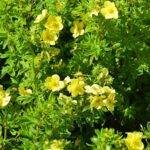The Zinnia Flowers Varieties that is indigenous to shrub and arid grassland regions in the Southwestern United States and South America, with a center of diversity in Mexico. Zinnias are popular ornamental flowers known for their vibrant colors and daisy-like flowerheads.
Zinnia Flower
Zinnia flowers are the blooms of the zinnia plant, a popular ornamental flower known for its vibrant colors and daisy-like flowerheads. They are indigenous to scrub and arid grassland regions that extend from the Southwestern United States to South America, with Mexico serving as the primary diversity hotspot.
Zinnia Varieties
- Dahlia-Flowered Zinnias
- Cactus Zinnias
- Queen Zinnias
- Zahara Zinnias
- Profusion Zinnias
- Thumbelina Zinnias

Zinnia Seeds
Zinnia seeds are a fantastic choice for gardeners who want vibrant, colorful blooms that are easy to grow. Here’s what you need to know about growing zinnias from seeds:
Selecting Seeds:
Choose zinnia seeds in various colors, shapes, and sizes. You’ll find options ranging from vivid reds and cheerful yellows to deep purples.
Look for disease-resistant varieties with sturdy stems, as they’ll yield long-lasting blooms.
Zinnia Elegans
A prominent perennial flowering plant native to Mexico is Zinnia elegans, which is also known as Mexican zinnia or simply zinnia. The following are several critical details regarding it:
- Plant Description:
- Zinnia elegans belongs to the Asteraceae family.
- It produces beautiful, colorful, daisy-like flowers.
- The flowers can be single, semi-double, fully double, or cactus-like.
- Leaves are lance-shaped or ovate, opposite, and may be hairy or smooth.
- Height ranges from 12 to 48 inches (30-120 cm), depending on the cultivar.
- Blooms start in early summer and continue until the first frost.
- Uses:
- Zinnias make great border plants and add color to garden beds.
- They thrive in containers and are popular as cut flowers.
- Pollinators like bees and butterflies are attracted to zinnias.
- They’re also excellent companion plants for fruits and vegetables.
- Benefits:
- Colorful blooms: Zinnias come in vibrant shades like pink, red, orange, yellow, lavender, white, and even green.
- Long-lasting: Enjoy their blooms from early summer until frost.
- Disease-resistant: Zinnias require minimal chemical intervention.
- Deer-resistant: Deer find their taste unappealing.

Zinnia Plant Care
Sunlight: Zinnias are sun worshippers! They need at least 6 hours of direct sunlight daily for optimal growth and flower production.
Soil: Well-draining soil is key. Compost or organic matter should be added to heavy clay soils in order to enhance drainage. Zinnias tolerate a slightly acidic to neutral soil pH (around 5.5 to 7.5).
Watering: Water your zinnias regularly, especially during hot and dry periods.
It is important to maintain the soil’s moisture level, but it should not be excessively wet.
Overwatering can lead to root rot.
Feeding: Zinnias are not heavy feeders, but a light feeding of fertilizer every few weeks can encourage bountiful blooms. Opt for a balanced fertilizer or one formulated for flowering plants.
Deadheading: Regularly deadheading, or removing spent flowers, will not only keep your plants looking tidy but also promote additional flower production. Simply pinch or snip off the faded flower head at the base of the stem.
Spacing: When planting zinnia seeds or seedlings outdoors, ensure proper spacing between plants. Refer to the specific variety you have, as spacing requirements can vary depending on their mature size. Generally, allow 6-18 inches between plants for good air circulation.
White Zinnia
Here’s some information about white zinnias:
- Varieties: There are many varieties of white zinnias available, each with its own unique characteristics. Some popular varieties include:
- Dahlia-flowered zinnias: These zinnias have large, fully double blooms that resemble dahlias.
- Cactus zinnias: These zinnias have narrow, pointed petals that curl inwards.
- Queen zinnias: These zinnias are some of the largest-flowered zinnias, with blooms that can reach up to 8 inches in diameter, and come in white as well.
- Zahara zinnias: These zinnias are known for their compact size and long bloom time, and also come in white.
- Profusion zinnias: These zinnias are another popular choice for home gardeners because they are easy to grow and produce a long bloom time, with white varieties available.
- Thumbelina zinnias: These zinnias are a dwarf variety that only grows to be about 12 inches tall, perfect for small gardens or containers, and also come in white.
- Planting and Care: White zinnias are just as easy to grow as zinnias of other colors. They require full sun and well-drained soil. Water them regularly, especially during hot, dry weather. Deadhead spent flowers to encourage continued blooming.pen_spark





We’re a group of volunteers and opening a new scheme in our community. Your web site provided us with valuable information to work on. You have done a formidable job and our entire community will be grateful to you.